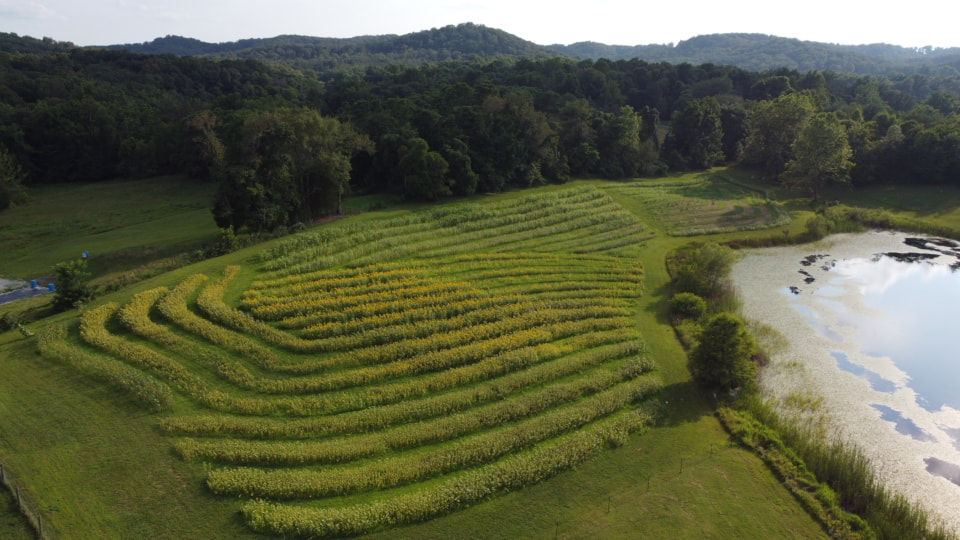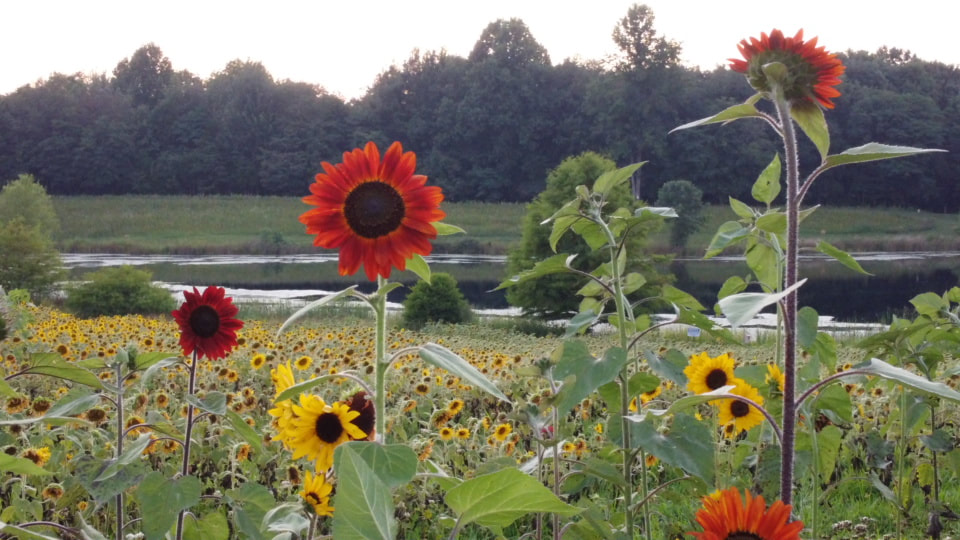KNOBSTONE FLOWER FARM
|
Today is one of those rare summer days where most tasks on the flower farm are far enough along for us to take a moment to reflect and relax. It’s Monday morning, raining and the busy weekend is behind us! Without question there is always something on the flower farm “to do” list; weeding, deadheading and even late season planting are a few fine examples. A lot of the success of flower farming is about planning and timing. Dancing between last frost, spring rains, mud, summer heat, humidity, brief drought, dust, summer storms, shortening days and first frost is certainly not for the faint hearted! But for today, it’s a time to reflect as the flower season has reached the midpoint of its glorious gift to summer. Reflection back, what has worked well this season? We have really enjoyed the Gromphrena (globe amaranths), African giant marigolds and celosia (Cock’s comb). Oh, the celosia! It has really won us over with its uniqueness, beauty and attraction of beneficial insects. We have been amazed in celosia’s post-harvest ability to go right into the vase. On the other hand, missed planting schedules, lavender still in pots when it should have been in the ground a month ago, zinnias that weren’t corralled early, weeds in the willow beds and powdery mildew are challenges that we face. It easy to be hard on ourselves for the failures but it pays to understand that these bumps in the road only make us better at what we do. We will never be able to get everything done that makes a perfect flower farm. So possibly it’s better to accept where we are and not where we think we need to be. For today is a great time to celebrate more success than failure. We will spend our time looking forward and planning our next adventures in flower farming. Reflection forward, what can we do to improve our soil? The flowers have given so much, and we need to consider what we can do to give back to the flowers for the next season. Specifically, what can we do to assist a biodiversity that supports a variety of life with a balance of both seen (cover crops) and unseen (microscopic bacteria and fungi). Our goal as caretakers of the land is to help strike a balance between the flowers we plant and the soil that sustains those flowers. We want to promote soil formation and provide protection from nutrient leaching and erosion. We want to use a strategy that preserve water resources, reduce runoff and provides filtration of this precious resource. We want to support a larger number of plant species that compliment each other, exactly how nature is intended to work. Consider the forest where variety of tree and plant species work together in concert to create a rich habitat and ecosystem that supports a variety of wildlife! Consider the wildlife that scatters the seeds and give back to maintain the fertility and permeability of the forest floor (yes we are talking poo here!). Consider the microorganisms such as bacteria and fungi that create the balance between forest, soil and wildlife, all interdependent on each other for optimal survival. Reality check, what can we do in our small corner of the world? We can approach the late summer and fall season as an amazing opportunity to support this balance of biodiversity! At Knobstone Flower Farm, we use multi-species cover crops to cover the soil and provide its protection. We use these diverse cover crop mixes to add fertility back into the soil without the need for synthetic (chemical) fertilizers. For example, we return our summer sunflowers and summer cover crops back into green manure prior to planting the late summer and fall cover crops. We have incorporated species into our cover crop mixes that aide in soil permeability. This approach helps with soil aeration that supports rain and moisture retention while reducing soil compaction, erosion and nutrient leaching from runoff. The biomass from the cover crops adds carbon and supports optimal soil texture. Legume cover crops such as hairy vetch and clovers can enrich the soil with additional nutrients through nitrogen fixation. We inoculation our legumes with mycorrhizal fungi that helps root systems acquire hundreds and even thousands of times more nitrogen, phosphorous, zinc, copper and other nutrients than would be possible without extending the root systems. In return, the change in the habit brings in earthworms that greatly increase the fertility and permeability of the soil! Densely planted multi-species cover crops also provide weed suppression which pays dividends in reduced labor when growing our cash crop, flowers! Some of our cover crops bloom early, mid-summer and late fall which supports beneficial insects such as bees. So, why doesn’t everyone use cover crops? From the farmer to the home gardener, cover crops can support optimal soil health! What about cost? Here is our late summer to fall planting multi-species cover crop mix: Black Oil Sunflower Seed, Buckwheat, Winter Cereal Rye, Australian Winter Peas, Hairy Vetch, Daikon Radish (Jackhammer), Crimson Clover, White Clover, Alfalfa, Wildflower Seed, Legume Inoculant. We spend about $150 for these seeds purchased in bulk. We calculated the cost of using a standard synthetic (chemical) fertilizer mix on the same planting area and came up with a cost of over $1,500. Our input cost is reduced by 90% which means the “potential” of profitability (see how we used the word “potential” as it is the ultimate gambling called “farming” by the way!) So, consider optimize soil health, conserving water resources, no dependence on synthetic (chemical) fertilizers, cover crops that support beneficial insects, weed suppression and lower input costs! On this rare summer day, we are feeling good about where we are going with our flower farm adventure!
3 Comments
It’s easy to get caught up in the beauty and amazement of the summer flower season. Each new day brings witness to the wonderment of God’s gift of nature in all its glory. Yet all good things have an end and the arrival of the first frost brings a sudden halt to the magnificent bounty of flowers. From the flowers first blooms in June to the fading of late October, it is a rewarding yet extremely busy time. So with the frost and the end of the season does the flower farmer take a deep breath and finally relax? Well, I guess it possible, but for us it was definitely no!
Late fall and winter are the time for planning. It’s the time to determine what worked last season and more importantly what did not work well. Seeds are ordered in anticipation of the next season. Fall is the perfect time to plant cover crops that amend the soil. These cover crops in turn support the biodiversity needed for healthy and vibrant flowers next season. It’s the time to improve infrastructure and plan for future growth. It’s also the time to gaze out on the empty fields and dream of things yet to come! The off-season at Knobstone Flower Farm has been a busy time of improvement and expansion. We have been diligently working since the time that our last customers came out to the farm in October. Here is a sampling of a few of our off-season activities:
It can be almost overwhelming at times, but we have a vision that we continuously work towards as a goal for the coming season! We are committed to investing our time, labor and money with this vision of having one of the most unique and enjoyable friend and family experiences in Southern Indiana. Knobstone Flower Farm is now a member of INDIANA GROWN.
Knobstone Flower Farm | Indiana Grown INDIANA GROWN has more than 1700 members and 50+ business partners which include farmers, farmers markets, distributors, producers, processors, wineries, breweries, artisans, as well as retailers, grocers, hospitals and restaurants. INDIANA GROWN creates connections between farmers and consumers by promoting all forms of agriculture that are packaged, raised, processed and grown within the state of Indiana.
We are proud to be part of INDIANA GROWN and support "buy local" Please check out other INDIANA GROWN members and support their small businesses with your purchasing decisions! |
David CoatesProprietor of flowers and fun experiences. "Bloom where you are planted!" Archives
August 2021
Categories |
Proudly powered by Weebly



 RSS Feed
RSS Feed